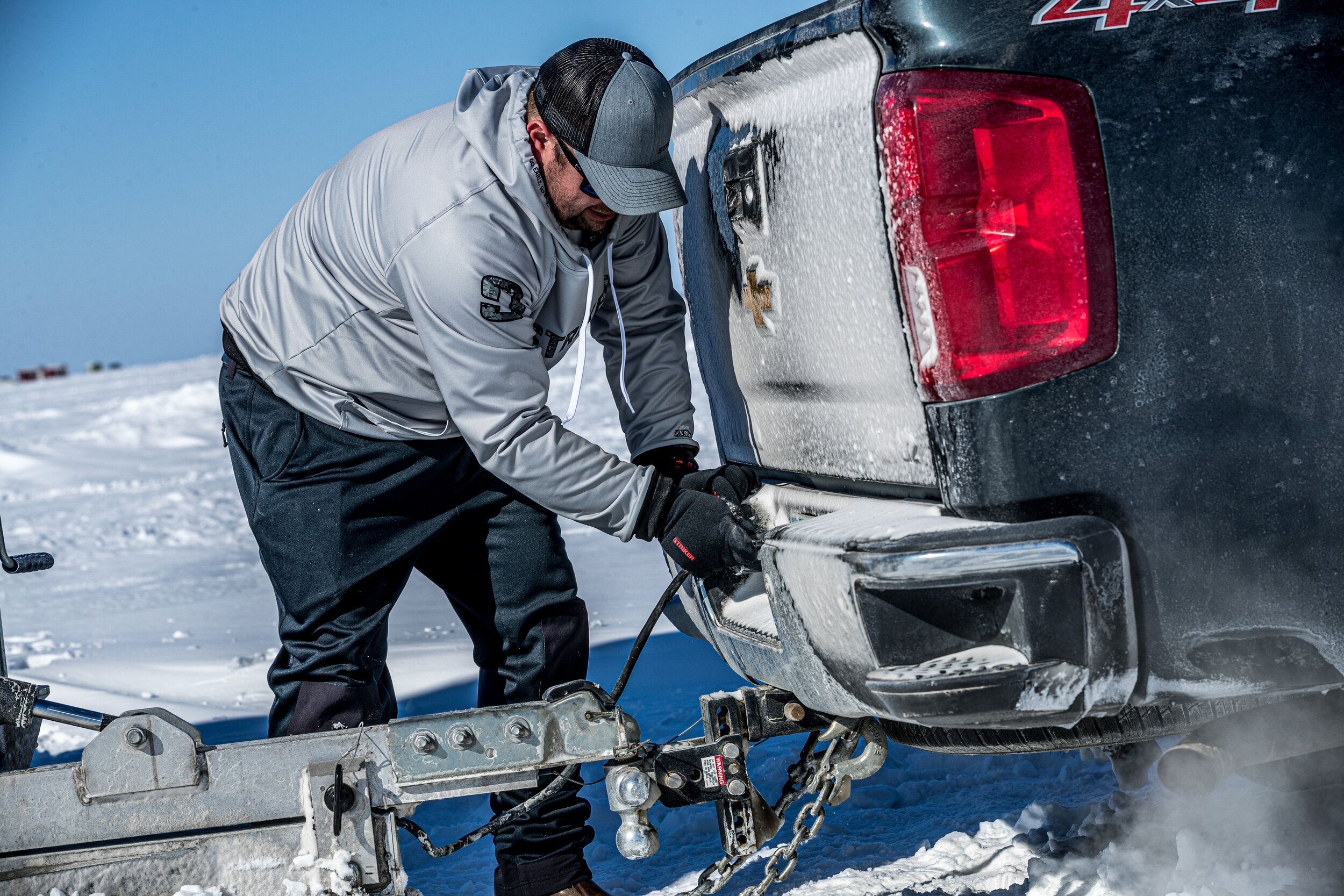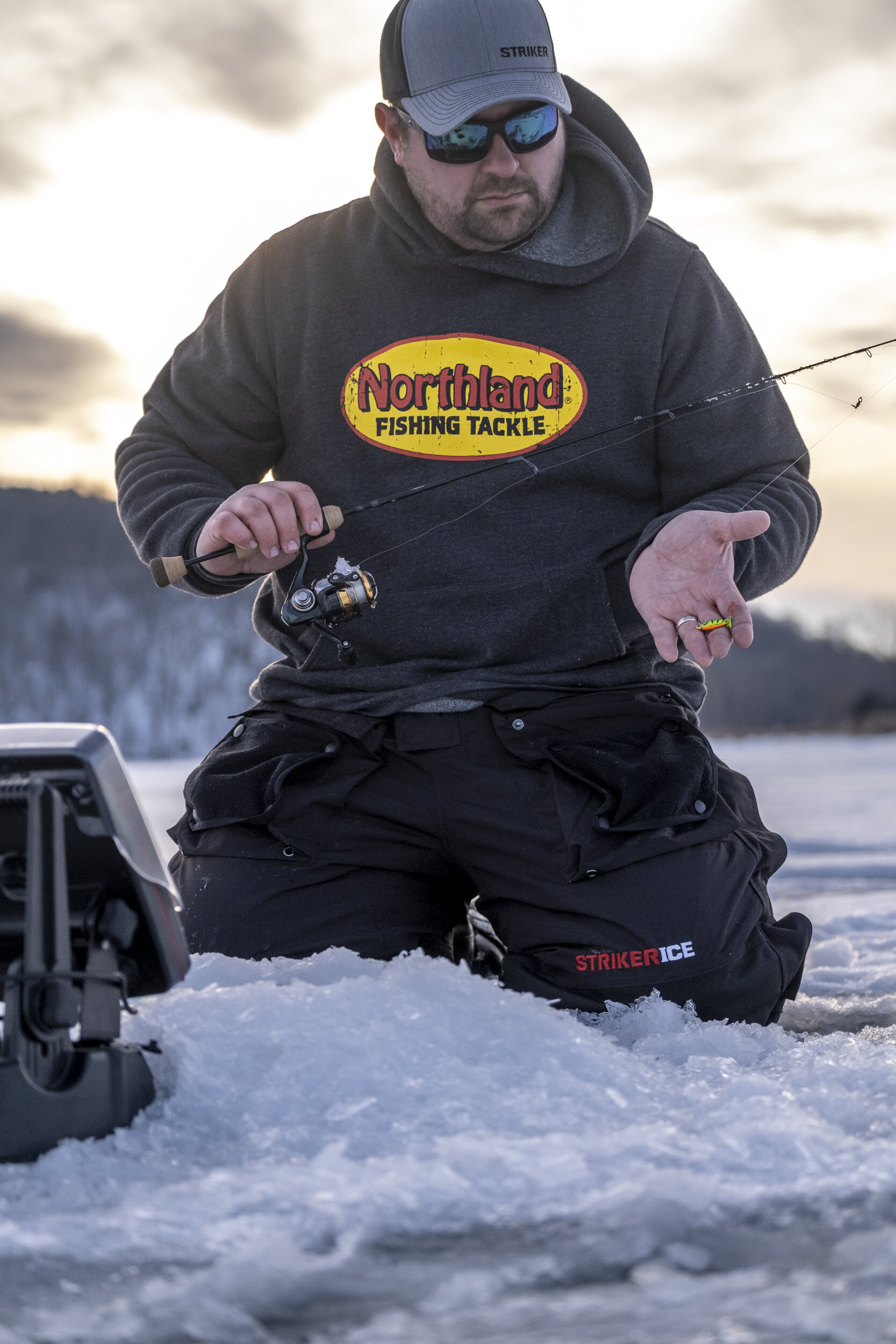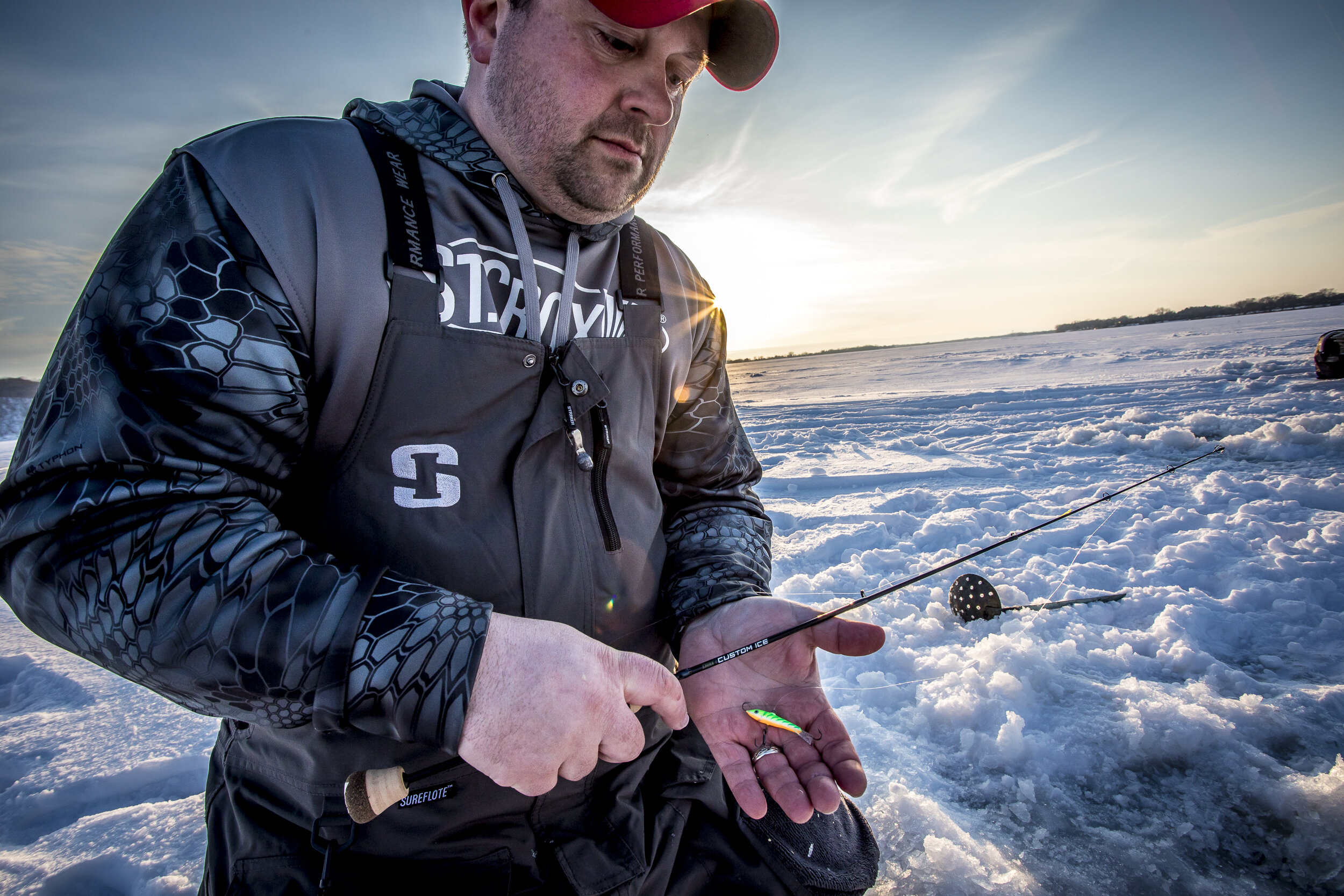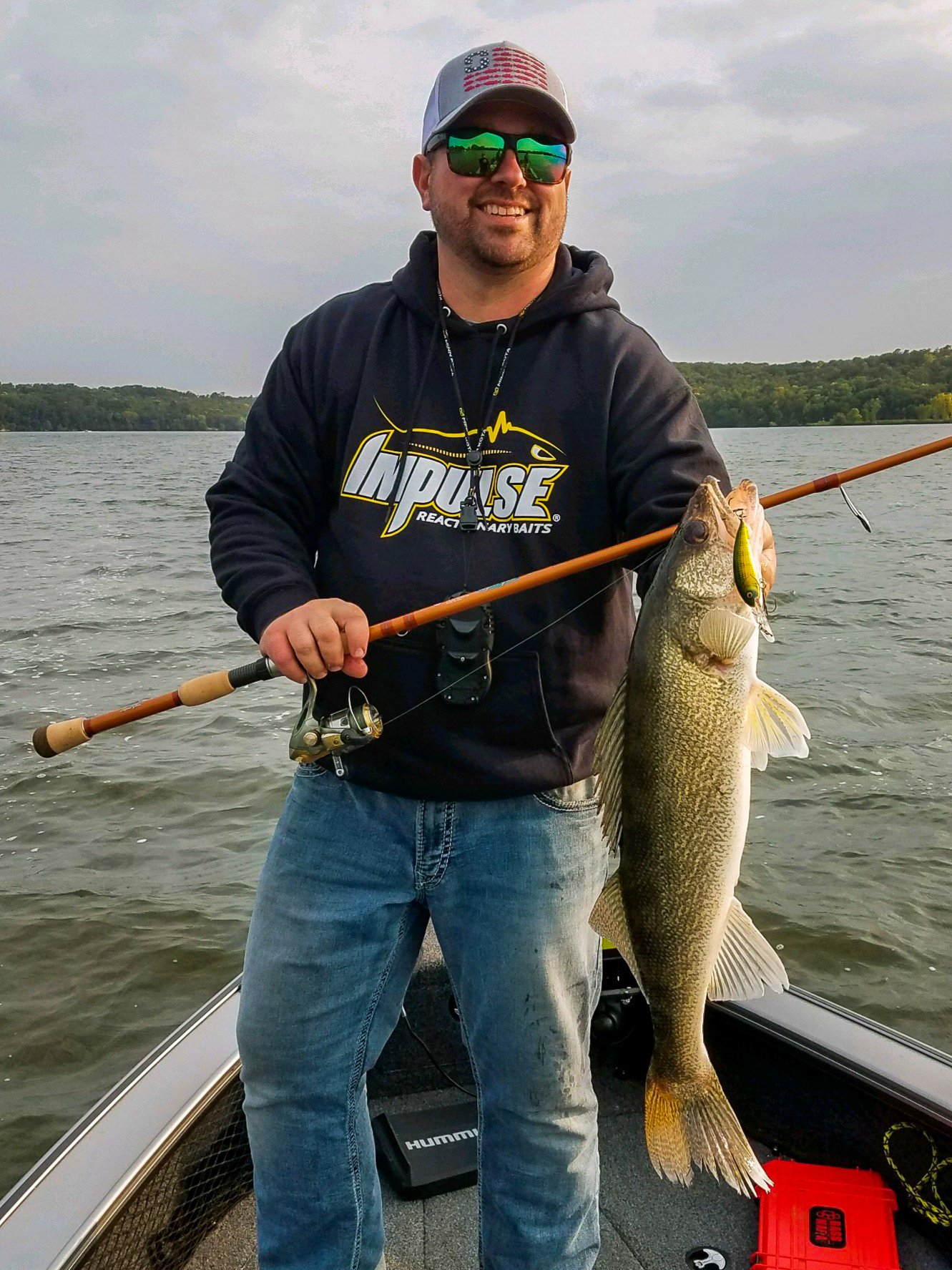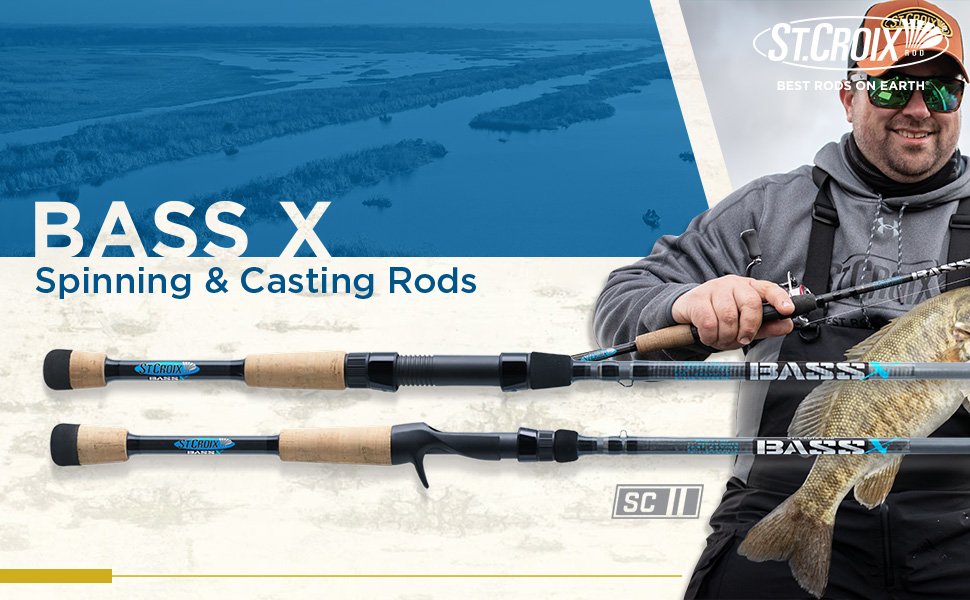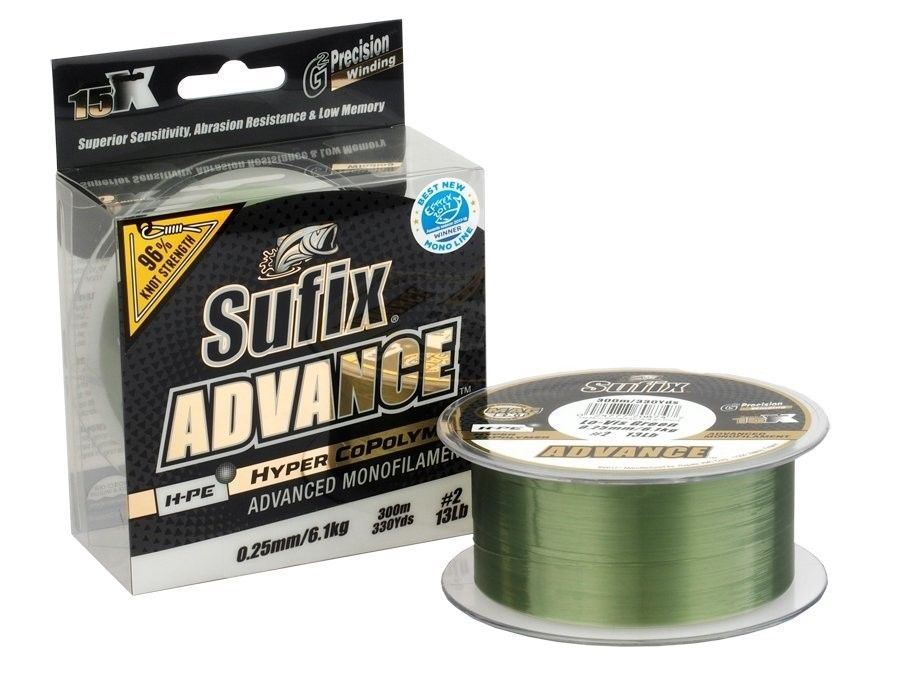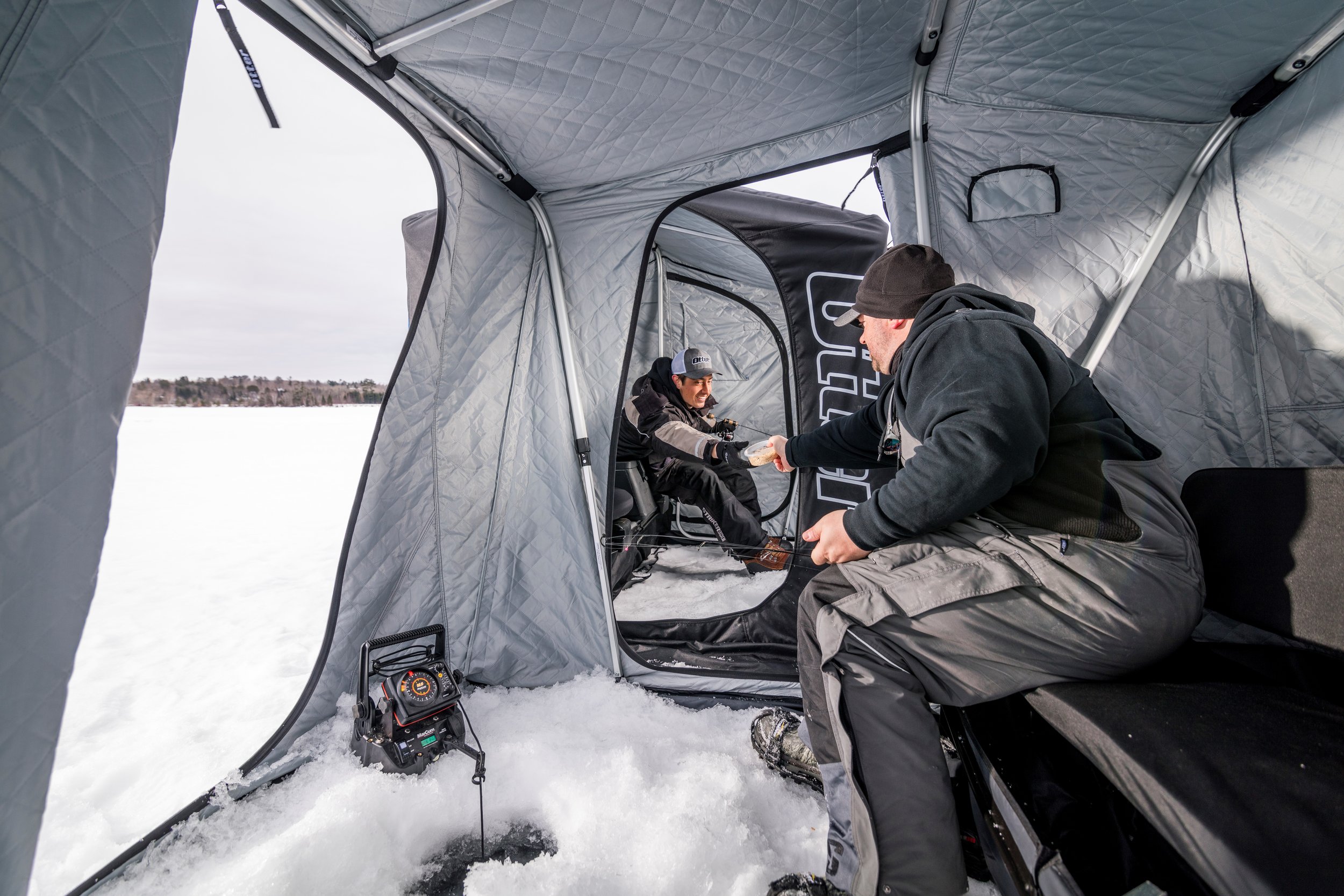Pictured - Stealth Gloves
J. Schragg asks:
Just wondering how you keep your hands warm ice fishing with no obvious heat source outside? I.e. lantern? Do you handwarmers?
I’ve always been a proponent of using the right tool for the job, and that applies to gloves or other strategies for keeping your hands warm. Different conditions and scenarios call for different ways of doing things. I own a number of pairs of gloves for fishing outside, and for the most part, I utilize 3 or 4 different types depending on what I’m doing for the day.
Long snowmobile or ATV rides across the open ice call for the warmest of warm. No matter how you stack it, you’ll likely need a mitten more than a glove in this scenario unless you’ve got heated handlebars. Even then, I once took a 45 mile snowmobile ride in -24 degrees Fahrenheit with a great pair of leather gloves where my palms were on fire, and the tops of my hands were nearly frozen. Mittens like the Tundra utilize the warmth of all fingers and some serious air loft to insulate. There’s no warmer option in my opinion. That’s especially true if you add liner gloves. Pop off the mitts and use the liners for a quick task or two, then put the mitts on and you’ve got the warmest 1-2 punch I know of.
That said, for most “cold” situations, you need a little bit of dexterity, plenty of warmth, and a whole lot of toughness for hooks, walleye fins, and rough ice. I use the Striker Combat gloves for probably 60% of my fishing, because they check all those boxes while being absolutely bulletproof.
For most other fishing or when dexterity is the name of the game, I use the Striker Stealth gloves. These are great around the fish-house, and setting things up. They’re not quite as warm as the previous two options, but are completely waterproof and allow you to perform any fine motor skills. You can run your phone with them, put pins in hitches, connect propane hoses, etc. - all while keeping your hands from getting wet. No wet equals warm on all but the coldest days.
I’m not a huge fan of handwarmers except when deer hunting, and even then I use them exclusively in a warmer muff wrapped around your waist. Ice fishing for me is more active than that, negating the use of them as much as I do when hunting deer.
Joel
